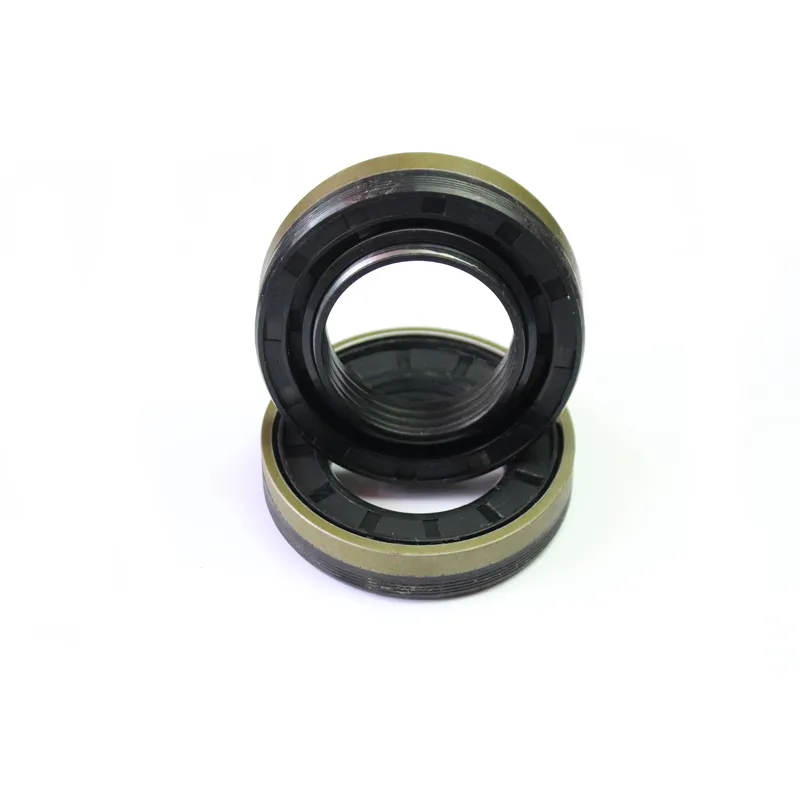rear end yoke seal
Understanding Rear End Yoke Seals Importance and Maintenance
The rear end yoke seal is a critical component in the drivetrain of vehicles, often overlooked yet essential for optimal performance. It serves as a barrier that prevents differential fluid from escaping the rear axle housing while also keeping contaminants out. Understanding its function, importance, and maintenance can help vehicle owners extend the life of their vehicles and avoid costly repairs.
What is a Rear End Yoke Seal?
The rear end yoke seal, commonly referred to as the differential seal, is situated at the rear of the vehicle's differential assembly. Its primary role is to seal the area where the driveshaft meets the differential, thereby ensuring that the lubricating oil stays contained within the rear end. The yoke itself is a critical part of the drivetrain, connecting the driveshaft to the differential and transmitting power to the rear wheels.
Why is the Rear End Yoke Seal Important?
1. Fluid Retention The rear end yoke seal prevents the differential fluid from leaking out. Differential fluid is vital for lubricating the gears and bearings within the differential. If the fluid level drops due to a leak, it can lead to excessive wear and tear on these components, potentially resulting in complete failure of the differential.
2. Contamination Prevention The seal acts as a barrier against dirt, debris, and moisture. Contaminated differential fluid can lead to corrosion and shorten the lifespan of the differential. Thus, maintaining the integrity of the seal is vital for the overall health of the vehicle's drivetrain.
3. Performance Optimization A properly functioning seal contributes to the efficiency of the vehicle. When fluid levels are consistent and free from contaminants, the differential can operate smoothly, ensuring optimal power delivery to the wheels and enhancing overall driving performance.
Signs of a Failing Rear End Yoke Seal
rear end yoke seal

1. Fluid Leaks One of the most noticeable signs of a failing yoke seal is the presence of fluid leaks. If you observe fluid pooling beneath the rear of your vehicle, it’s essential to investigate promptly.
2. Noise from the Differential A failing seal can lead to low fluid levels which may result in unusual noises coming from the differential, such as whining or grinding sounds.
3. Unusual Vibrations If you experience vibrations while driving, especially during acceleration, it could be indicative of an issue with the differential or the driveshaft, possibly related to a worn or damaged yoke seal.
Maintenance Tips
1. Regular Inspections Vehicle owners should routinely inspect the rear end of their vehicles, looking for signs of fluid leaks around the differential and yoke area. Regular checks can help catch issues early before they escalate into more significant problems.
2. Fluid Changes Maintaining the correct fluid level and changing the differential fluid according to the manufacturer's recommendations can greatly reduce wear on the yoke seal, as fresh fluid aids in optimal sealing performance.
3. Professional Service If you suspect that your rear end yoke seal is failing or if you notice any unusual symptoms, it is advisable to seek professional help. A qualified mechanic can accurately diagnose the problem and recommend necessary repairs or replacements.
Conclusion
The rear end yoke seal might seem like a small component within the complex automotive system, but its role is vital to the functionality and longevity of a vehicle. By understanding its importance and adhering to regular maintenance practices, vehicle owners can ensure that their drivetrain remains in peak condition, preventing expensive repairs and enhancing driving performance. Regular checks, fluid maintenance, and professional evaluation are key to safeguarding this crucial sealing component. Ignoring the significance of the rear end yoke seal can lead to more severe issues down the line—investing time in its care is a worth-while endeavor for every vehicle owner.
-
The Ultimate Guide to Car Repair Kits: Tools and Essentials Every Driver Should Own
News Aug.01,2025
-
The Complete Guide to Oil Pan Gaskets: Sealing Engine Leaks the Right Way
News Aug.01,2025
-
Preventing Oil Leaks: A Complete Guide to Oil Pan Gaskets and Drain Seals
News Aug.01,2025
-
Everything You Need to Know About Oil Pan Gaskets and Drain Plug Seals
News Aug.01,2025
-
Essential for Car Owners: How to Use a Car Repair Kit to Deal with Minor Breakdown
News Aug.01,2025
-
Comprehensive Guide to Engine Oil Sump Gaskets and Related Seals
News Aug.01,2025
-
The Ultimate Guide to Boat Propeller Bearings and Trailer Wheel Bearings
News Jul.31,2025
Products categories















